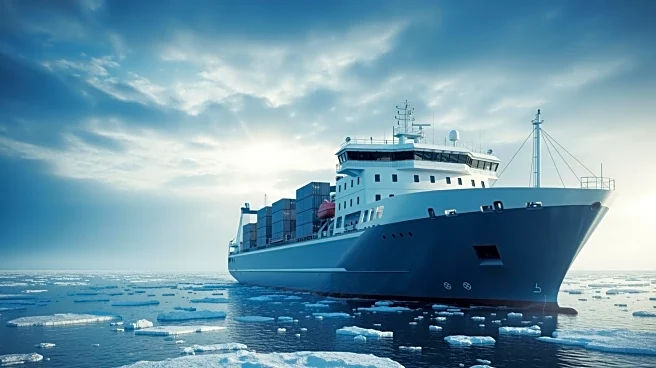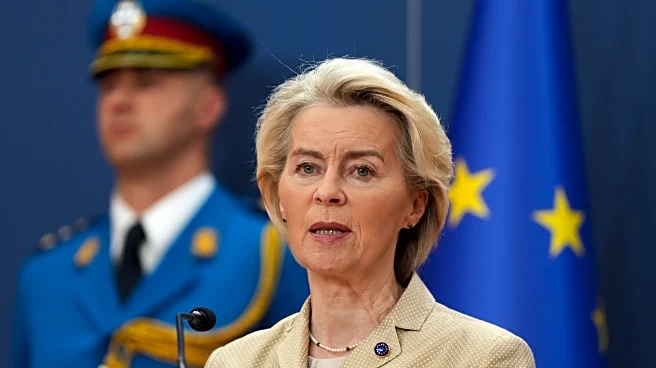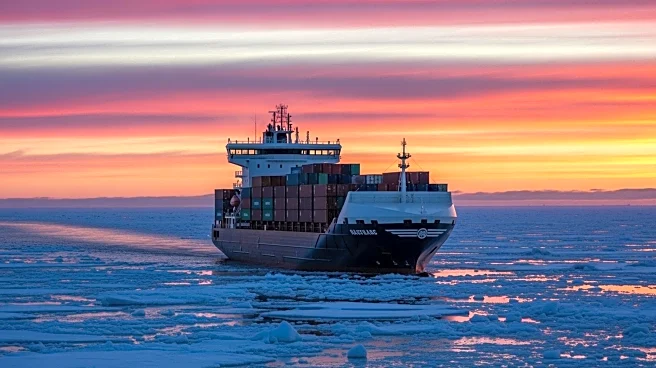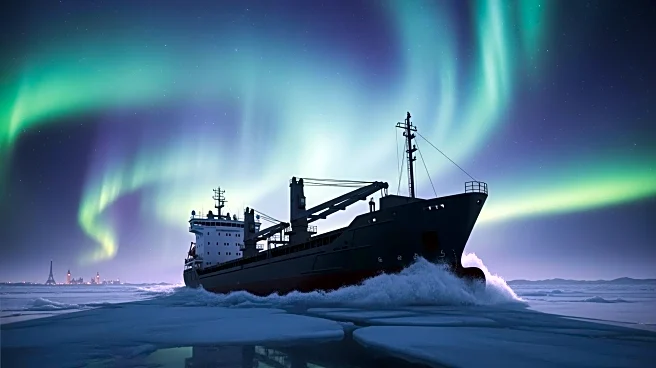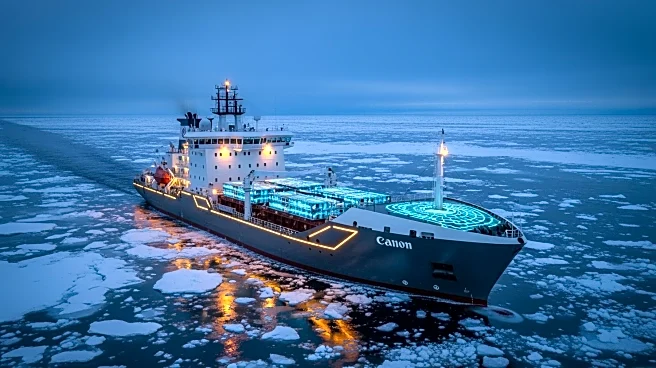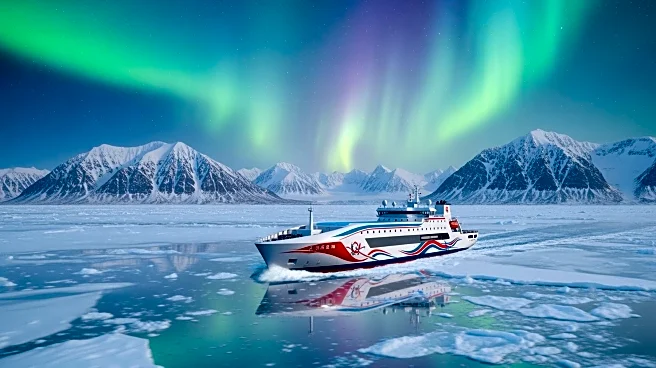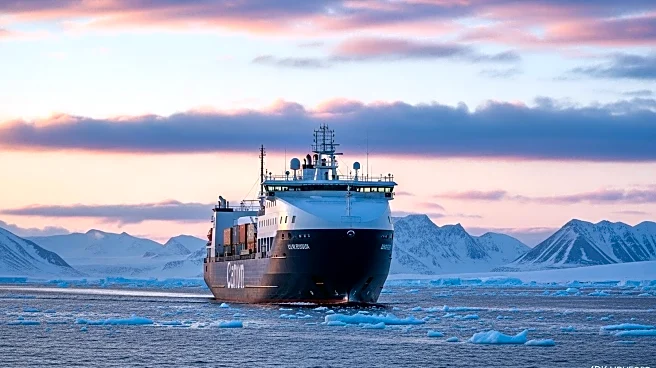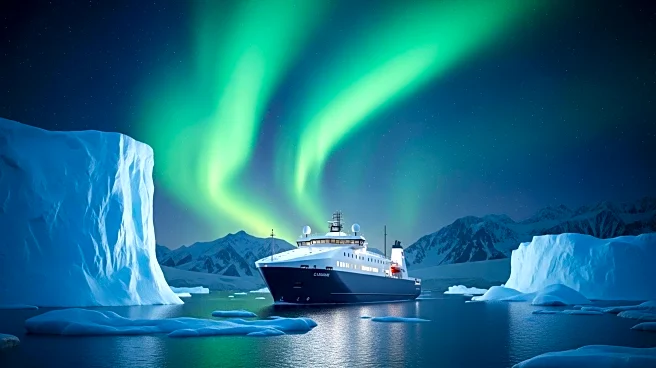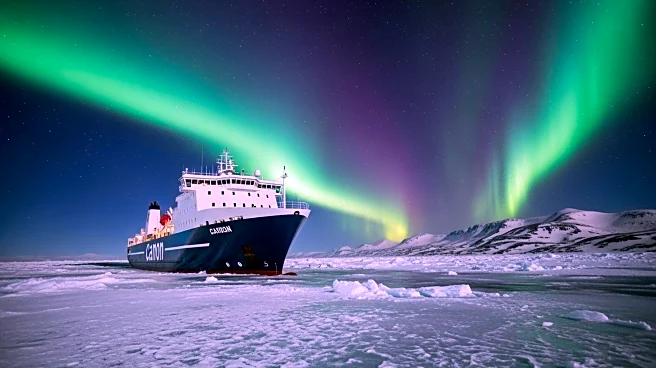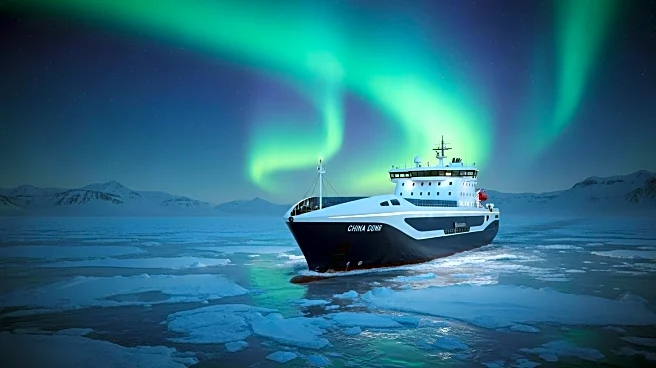What's Happening?
A Chinese container ship, the Istanbul Bridge, has successfully completed its maiden voyage through the Arctic to a UK port, significantly reducing the delivery time for goods such as electric vehicles and solar panels destined for Europe. The journey,
initially expected to take 18 days, was delayed by two days due to a storm off Norway but still arrived earlier than the typical 40 to 50 days required via the Suez Canal or Cape of Good Hope. This new Northern Sea Route, which runs entirely through Arctic waters within Russia's exclusive economic zone, has become navigable due to global warming. The route is part of China's strategy to establish faster maritime links with the European Union amid a trade war with the United States.
Why It's Important?
The successful Arctic voyage by the Chinese freighter marks a significant shift in global shipping routes, potentially altering trade dynamics between major economies. By halving delivery times to Europe, China can enhance its export efficiency, crucial for sustaining growth in its manufacturing-dependent economy. This development also underscores the impact of climate change, as melting Arctic ice opens new commercial shipping lanes. The route offers China an alternative to the Strait of Malacca, reducing reliance on traditional maritime paths and strengthening its maritime cooperation with Russia. The shift could affect U.S. trade, as Chinese exports to Europe increase while shipments to the U.S. decline.
What's Next?
The completion of this Arctic voyage may prompt further exploration and utilization of the Northern Sea Route by other shipping companies, potentially leading to increased maritime traffic in the region. Stakeholders, including environmental groups, may raise concerns about the ecological impact of increased shipping in the Arctic. Additionally, geopolitical dynamics could evolve as countries like China and Russia deepen their cooperation in Arctic waters. The U.S. and European nations may need to reassess their strategic interests in the Arctic, considering the implications for global trade and environmental policies.
Beyond the Headlines
The opening of the Northern Sea Route highlights the broader implications of climate change on global trade and geopolitics. As Arctic ice continues to melt, new opportunities and challenges arise for international shipping, potentially reshaping economic and political alliances. The environmental impact of increased shipping activity in the Arctic could lead to calls for stricter regulations and conservation efforts. Furthermore, the strategic importance of the Arctic may increase, prompting nations to invest in infrastructure and security measures to protect their interests in the region.
